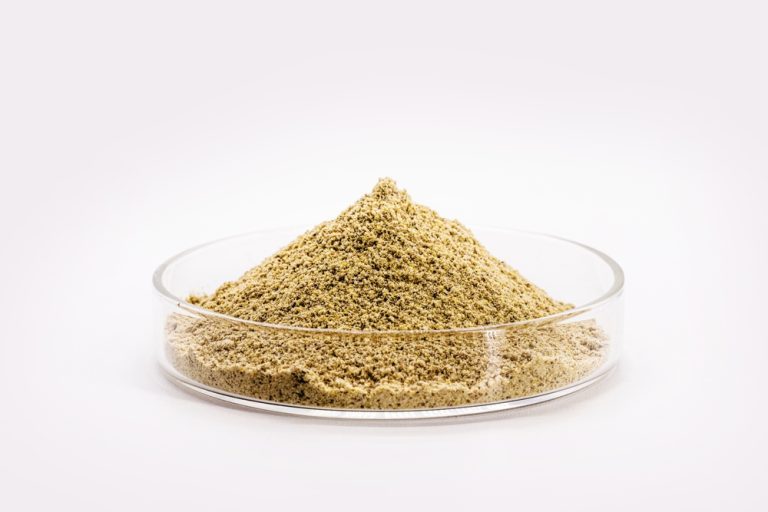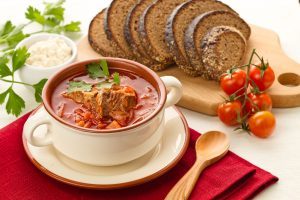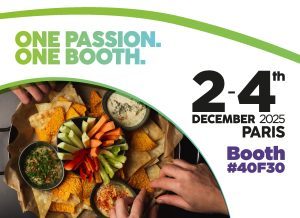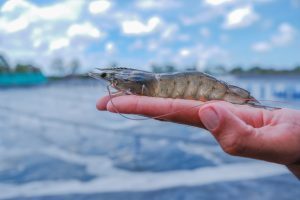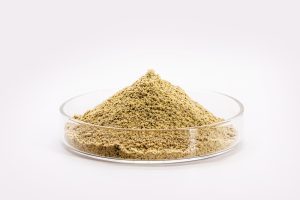For over 7,000 years, civilizations such as the Egyptians, Sumerians, and Babylonians have utilized yeast, even without knowing its composition. Yeast was used to ferment bread, beer, and wine, as they observed that certain mixtures would “mysteriously” rise or become alcoholic.
Over the years, with technological advancements, yeast has been increasingly utilized in various areas beyond food production and fermentation, including the production of plant-based products, bioplastics, biofuels, nutraceuticals, cosmetics, and sustainable agriculture.
In human nutrition, yeast is recognized for its nutritional profile and its role in flavor development. Due to its composition rich in nucleotides and glutamic acids, it has attractive sensory characteristics that are essential for enhancing the umami flavor in foods.
To increase consumer acceptance of this ingredient, it is essential to educate them about its nutritional, environmental, and economic benefits.
This article aims to clarify why yeast is included in the formulations of various types of food, the function of its different types and components, and how Biorigin can be a valuable and safe addition to a healthy diet, as well as a strong ally to the food industry.
WHERE IT ALL BEGINS: THE WORLD OF MICROORGANISMS
In the fascinating world of microorganisms, yeasts belong to the Fungi kingdom—organisms that feed by absorption, sharing the same family as mushrooms and molds.
Unlike mushrooms and molds, which are multicellular, yeasts are unicellular fungi that are invisible to the naked eye; yet, they have a significant impact on various aspects of human life.
Yeasts are a rich source of valuable nutrients, including high-quality proteins, B-complex vitamins, fiber, and minerals.
Far from being villains or foreign elements, yeasts play essential roles in both nature and industry, from fermenting bread and beverages to producing ingredients such as yeast extracts and cell walls.
Yeasts are a natural solution that impart unique and bold flavors to various foods, helping promote more nutritious, balanced, and flavorful diets.
AEROBIC VS. ANAEROBIC FERMENTATION
When we think of yeast, we often associate it with products like bread, beer, and wine. These foods are an integral part of many people’s daily lives and are produced through fermentation processes driven by yeast.
But the applications go far beyond the kitchen! Yeasts also play a leading role in various industrial processes, contributing significantly to the production of functional and nutritional ingredients.
Fermentation occurs when yeasts consume sugars, and this process can happen in two ways:
- Aerobic Fermentation (with oxygen): In oxygen-rich environments, yeasts convert sugars into carbon dioxide, water, and enough energy to multiply and produce yeast biomass, which is then used to create ingredients like yeast extract and inactive dry yeast.
- Anaerobic Fermentation (without oxygen): In oxygen-free environments, yeasts convert sugars into ethanol and carbon dioxide, which is key for producing alcoholic beverages like wine and beer, fuel ethanol, and bread dough.
At Biorigin, aerobic Fermentation is used to multiply yeast and later produce various types of ingredients from it, contributing to the development of healthier and more sustainable food solutions.

THE RICHNESS WITHIN YEAST
During controlled fermentation, we create ideal conditions, with the proper levels of nutrients, temperature, and pH, to enable yeast to grow healthily and multiply.
This biotechnological process enables the large-scale production of yeast biomass, which serves as the basis for obtaining the ingredients we offer to the market, such as yeast extract.
Each yeast cell is a valid nutritional package! It contains:
- Proteins
- Carbohydrates
- Fibers
- B-complex vitamins
- Minerals
- Lipids
These compounds have valuable nutritional and technological functions and are extracted and used as ingredients in food and supplements.

After the multiplication phase, we begin the yeast disruption process, releasing the soluble intracellular componente, rich in amino acids and nucleotides, and isolating the cell wall, which is rich in fiber.
This way, we obtain various yeast-derived ingredients, such as:
- Yeast extract, the soluble intracellular content, is used to enhance the flavor of various foods and contribute to building the umami flavor profile (a Japanese term meaning “delicious”), elevating the sensory experience of each recipe.
- Cell walls, the insoluble part of yeast, are rich in fiber and are used in both animal and human nutrition and health, as well as in winemaking as a fermentation nutrient.
Gabriel Ramos Galassi, R&D Specialist at Biorigin, shares insights about the yeast process at the company and the unique qualities of their natural-origin ingredients: “At Biorigin, the yeast production process is conducted with strict quality control, ensuring that each batch meets the required technical specifications. We utilize yeast strains specifically selected for their high efficiency and performance, ensuring consistent fermentation outcomes. This attention to detail at every stage of the process is what sets us apart and reinforces our commitment to excellence and product reliability.”
WHAT ARE THE TYPES OF YEAST?
Depending on the type and production process, yeast can meet different nutritional needs. Here are the main types of yeast:
- Inactive Dry Yeast: Whole, dried yeast with preserved cell wall and intracellular content. It is rich in proteins, vitamins, and other essential nutrients. Widely used as a nutritional supplement for humans, a functional carrier in the food industry, and an alternative protein source in animal nutrition.
- Autolyzed/Hydrolyzed Yeast: Undergoes a process called autolysis, where enzymes break down the cell wall, partially releasing the intracellular content. In the food industry, it is used to enhance the flavor of products, including pet food formulations. Its easily absorbed protein is especially beneficial for animal nutrition.
- Yeast Cell Wall: Composed mainly of carbohydrates and fibers such as mannan oligosaccharides (MOS) and β-glucans, as well as fats, minerals, and proteins. It possesses nutritional properties, especially a high fiber content, and functional properties, such as enhancing texture, improving water retention in foods, and serving as a carrier for aromas and flavors. In fermentation, especially winemaking, it serves as a source of essential nutrients, promoting microbial growth and stability or helping remove inhibitory compounds.
- Beta-Glucans: Present in the yeast cell wall, Biorigin has an exclusive process that exposes beta-glucans, making them more bioactive. Beta-glucans are recognized for their ability to enhance the natural defenses of humans and animals, thereby supporting overall health and well-being.
BENEFITS OF YEAST
The food industry utilizes yeast-derived products and yeast extract to enhance the nutritional profiles and impart specific flavor characteristics to various types of food. But do you know the main benefits?
- Vegetarian and vegan diets: Due to its distinctive flavor, yeast is a natural-origin ingredient ideal for people looking to reduce meat consumption while maintaining bold flavors in their meals. Additionally, inactive dry yeast is used as a nutritional supplement.
- Low salt content: Yeast extracts have a similar effect to spices, thanks to their aromatic and distinctive flavor, adding a unique and savory touch to foods. This allows for a reduction in total salt content in recipes.
- Low fat content: Yeast extract provides a characteristic umami flavor that enhances the taste of ingredients, including fat, and improves the texture of food. This makes low-fat recipes more flavorful and appealing, preserving richness and mouthfeel even with reduced fat.
- Low sugar content: Yeast extract is a valuable ally in sugar-reduced recipes. Its umami profile enhances natural flavors and provides a richer, more complete taste experience—even in low-sugar formulations.
Regiane Ghirotti, Food Product Manager at Biorigin, highlights the benefits of yeast for human nutrition: “In a sector where flavor, health, and innovation go hand in hand, it’s inspiring to know there are solutions that help the food industry tackle its biggest challenges. What few people know is that with versatile, sustainable, and natural-origin ingredients, it’s possible to go further and unlock new possibilities. Come discover with us how we can turn every challenge into a delicious opportunity.”
BIORIGIN’S MAIN PRODUCT LINES AND THEIR APPLICATIONS
With over 20 years of biotechnology expertise, Biorigin offers a comprehensive portfolio of yeast and yeast extracts, comprising more than 42 product options that cater to the diverse needs of the food industry. These are natural and non-GMO alternatives for flavor building, clean label formulations, and healthy products. Discover our solutions:
- Bionis (Yeast Extracts): Flavor enhancement, sodium reduction, and umami profile building.
- Applications: Snacks, broths, seasonings, processed meats, plant-based products, and sauces.
- Biotaste (Yeast-Based Line): Specific flavor notes such as chicken, beef, and roasted, ideal for flavor enrichment and masking off-notes.
- Applications: Meat analogs, soups, broths, breaded products.
- Bioprotein (Yeast Extract with a minimum of 75% protein): Contains all essential amino acids with high levels of BCAAs, a non-animal protein source, highly digestible, and 100% soluble.
- Applications: High-protein products, amino acid supplementation, plant-based products, protein drinks, protein snacks.
- Goldcell (Inactive/Autolyzed Dry Yeast and Cell Wall): Improves texture, juiciness, and contributes nutritional value.
- Applications: Plant-based products, bakery, processed meats.
Alexandre Raszl, Food Application Manager at Biorigin, emphasizes the benefits of Biorigin’s solutions: “Biorigin’s portfolio products are natural-origin ingredients with a health appeal, allergen-free and additive-free, designed to meet consumer and market demands. They enhance flavor, deliver umami impact, replace monosodium glutamate, reduce sodium, sugar, and fat, improve color, mask residual flavors from plant proteins and other off-notes, improve texture, and boost nutritional aspects such as protein, fiber, vitamins, and amino acids. We also focus on flavor and innovation in applications to develop solutions in partnership with the food industry, showing how our yeast extracts can transform products and delight consumers.”

In addition to this article, we provide a step-by-step explanation of Biorigin’s yeast production in a comprehensive and engaging video. Click here to watch
Lara Gazolla de Rezende, Food Product Specialist at Biorigin, shares an insightful perspective: “From ancient civilizations to modern biotechnology, yeast has evolved from a ‘mysterious’ fermentation agent to a strategic, functional, and sustainable ingredient, essential in building healthier, tastier foods aligned with modern consumer demands. It’s a journey Biorigin leads with innovation, expertise, and a commitment to nutrition and the planet.”
For more information about Biorigin and our yeast and yeast extract solutions for the food industry, visit our website.


